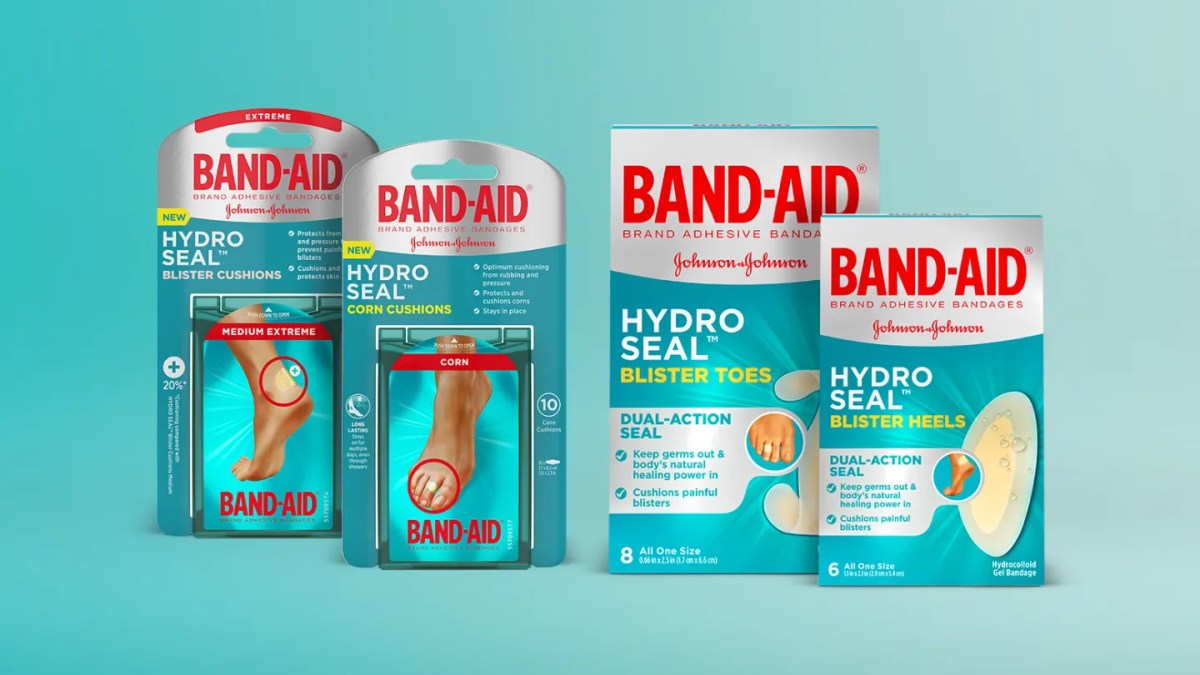
An often asked question on hiking forums and Facebook outdoor pages for hiking is “how do I deal with blisters,” and how to prevent them. The same advice is given repeatedly, involving duct tape, other tapes, pads, and a variety of different materials.
But there are better options that are simple to use. Before 2007, I was often plagued by nasty blisters on my feet. I would be limping down the trail, in terrible pain, with piles of various tapes all over my feet.
I would typically get blisters on the back of my heel, between my big toe and second toe, on the balls of my feet, and the outside of my pinkie toe, which would curl under and develop a large blister on its bottom.
Good times.

This was a section hike on the Pacific Crest Trail (PCT) in Washington State during the summer of 2006. My feet were in so much pain at that point. I would end up hiking over 20 miles the next day to get home so that I could go barefoot. I knew that if I took my shoes off for another night on the trail, putting them back on would be hell on Earth.

I ended up hiking in sandals for at least 10 miles that trip, just so my feet could exist, which wasn’t the best choice on a trail of nothing but rocks.
That trip changed how I treated my feet. I decided I had to figure out what was causing all my issues and fix them. It didn’t seem right that blisters were part of every trip! Why was I suffering every trip?
So what changed after that year?
- I quit wearing heavy boots. Back then, most hikers still wore heavy boots. They were rigid and didn’t breathe well. If they were waterproof, they had a liner inside that hogged even more foot space.
- I found shoes with a broader toe box, so my toes could spread. For me, this was Keen Voyagers, and to this day, I hike in them. I replace them every 6 to 12 months, depending on mileage.
- I went to low-cut trail runners with Vibram soles. See above.
- I started wearing Injini toed socks and quit wearing wool socks. Previously, I wore standard wool socks, often paired with a synthetic liner. This was what was considered “normal” at the time. With lighter shoes, I didn’t need two pairs of socks. By wearing thin-toed socks, I suddenly had even more room in my shoes. But more than that, my feet could breathe. No longer were my toes and feet hot and sweaty. With material snugly between my toes, I wasn’t rubbing anymore. It was a massive game-changer for me. During my first hikes with Injini socks on, I didn’t get a single blister.
- I also added aftermarket insoles to deal with my chronic Morton’s neuroma in the past 5 years.
- If you get athlete’s foot, keep your feet treated! If you have a trip coming up, consider treating them with the lotion a couple of days in advance. You don’t want cracked skin, which is more likely to become inflamed. Wash your socks inside out as well. If you do have athlete’s foot, avoid wearing socks for more than one day when hiking. Suffer the extra ounces, and carry a fresh pair daily.
- If you do a water crossing and get wet feet, this can lead to blisters. Better to take your shoes off and just suck it up crossing. Then take the time to air dry your feet and put your socks and shoes back on.
- If you are hiking long miles, and take a lunch break, take your shoes off and let your feet air out.
- Upon arrival at camp, remove your shoes and socks. Pop out your insoles to air out, and wear camp sandals (which, if you wear sandals barefoot often, wash your sandals weekly to keep your skin healthier!)
So, what do I recommend if you get blisters?
As you switch to better options (such as new shoes and socks), you can still get blisters. Maybe it’s just not your day. Your feet could be too sweaty, or you could get wet feet that don’t dry out.
But OMG, STOP as soon as you feel a hot spot starting. I used to ignore it. And then suddenly you can’t ignore it. Just suck it up. Stop. Sit down and take off your shoes. Inspect your toes/feet. Sometimes, all you need to do is shift your socks or remove debris from your shoes.
But if it is a hot spot forming, get a Band-Aid Blister item on it:

These are commonly sold in most pharmacies and grocery stores, typically located in the foot care or first aid section. Some pharmacies also sell their house brands. They are not cheap, often at over $1 per wrap, but they are priceless. The Hydro Seal™ ones will fill in popped blisters, stopping the red-hot pain quickly. They stay on for days and are waterproof.
Amazon carries the standard for heels and also its Amazon brand version.
I carry extras in my first aid kit, and over the years, I have handed out dozens of them to hikers I have passed on the trail, who were looking at their blister-plagued feet. Add in friends who don’t walk much, and by the end of Day 1 in Disneyland, they have blisters. However, they listen to me and get a box, and by Day 2, they’re all smiles.
Have these along, and if a blister occurs, you can get back on the trail without being in pain. Or be able to help someone in pain!
~Sarah



![The BEST Camera Accessories – Photography Essentials [2025]](https://som2nynetwork.com/wp-content/plugins/phastpress/phast.php/c2VydmljZT1pbWFnZXMmc3JjPWh0dHBzJTNBJTJGJTJGc29tMm55bmV0d29yay5jb20lMkZ3cC1jb250ZW50JTJGdXBsb2FkcyUyRjIwMjUlMkYwNyUyRkJlc3QtQ2FtZXJhLUFjY2Vzc29yaWVzLTMzNngyMjAuanBnJmNhY2hlTWFya2VyPTE3NTM5NzIwODAtMTM1MzgmdG9rZW49ZDZjZWNkNTQ3NDQ4ODUzNA.q.jpg)


